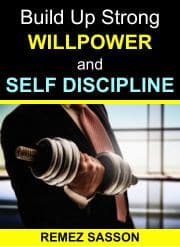
With so much of life happening online, digital burnout has become a challenge for many.
The constant pings from notifications, the endless flow of online tasks, and the feeling of always being ‘on’ can lead to stress and fatigue. But with the right approach, it’s possible to avoid these effects and find balance.
Adopting mindful strategies and setting limits can help you reclaim your time and energy. Here are some tips to help you prevent digital burnout and use your time more effectively.
Set Clear Boundaries for Screen Time
Browse our online courses on meditation, positive thinking, overcoming procrastination, and freedom from distractions.
Setting boundaries around screen time can greatly reduce digital fatigue. Decide on set hours for activities like checking emails or browsing social media, rather than responding on demand. Using apps such as RescueTime or Screen Time (available on iOS) allows you to monitor your habits and receive daily summaries of your screen time.
Turning off unnecessary notifications also helps limit distractions. Activating ‘Do Not Disturb’ mode during focused work sessions or family gatherings can help keep you centered. These small adjustments can make a significant difference in both your focus and stress levels.
Practice Mindful Digital Breaks
Taking breaks that disconnect you from screens is crucial for managing digital burnout. Make a conscious effort to spend break times away from your phone, laptop, or tablet. Try a quick stretch, a walk outside, or even a short breathing exercise to clear your mind. These non-digital activities can help reset your focus and energy.
For a structured approach, consider following the 20-20-20 rule: every 20 minutes, look at something 20 feet away for 20 seconds. This exercise relaxes eye muscles strained from screen exposure and is a helpful habit for anyone working in front of a screen for extended hours.
Use Digital Tools to Optimize Your Work
Although it’s important to limit screen time, using technology wisely can actually help you manage time better. Setting deadlines and collaborating efficiently can be easier with productivity tools like Asana and Notion that allow you to organize your tasks. These tools help reduce digital clutter by centralizing work in one place, making it easier to track and complete tasks.
If you’re juggling multiple projects, consider using calendar tools that integrate with your task manager. Google Calendar, for instance, allows you to set reminders and create time blocks for focused work sessions. This digital organization can help you reduce scattered screen time and focus on one task at a time.
Create a Secure Digital Workspace
With remote work environments becoming more prominent, it’s essential to ensure your digital workspace is secure.
The added layer of security doesn’t just protect your data but also brings peace of mind, allowing you to focus on tasks without worrying about potential threats. For example, using a CyberGhost VPN free trial provides a secure way to browse online and access resources, particularly on public Wi-Fi networks. This tool encrypts your internet activity, which is especially helpful for remote workers who need to protect sensitive information while accessing different networks.
Adopt the Pomodoro Technique for Focus
The Pomodoro Technique is a helpful tool for keeping focus steady while working in short bursts. Typically, you work for 25 minutes, then pause for 5 minutes to reset. After four rounds, take a longer break, around 15 to 30 minutes, to fully recharge. This process is designed to keep your mind sharp and reduce fatigue.
Everyone’s attention span is different, so feel free to adjust the timing to fit your needs. Some people prefer longer work intervals, like 45 minutes, with a 10-minute break. Find what feels most comfortable and productive for you, and adjust the Pomodoro timer to match your preference.
Schedule Regular Digital Detox Days
Dedicating a day or even a few hours each week to disconnect from screens can be incredibly refreshing. A digital detox allows you to engage in offline activities, like reading, exercising, or spending time with loved ones, without the distractions of technology. Consider setting a “tech-free” day each week, or simply designate an evening where you disconnect.
To make the most of this time, plan specific activities you enjoy. Whether it’s cooking a new recipe, trying a creative hobby, or exploring your local area, filling your day with offline activities helps recharge your mind and maintain balance.
Stay Organized with Time-Blocking Techniques
Time-blocking your schedule helps you focus by giving each task a specific period in the day. This can mean setting aside one block for reading emails and another for project work, allowing you to concentrate fully without switching tasks. The method is useful for minimizing distractions and maximizing productivity.
Adding short breaks between blocks also gives you time to handle last-minute items or rest briefly. Digital calendars help you map out these blocks, visually reinforcing your schedule and making it easier to stay on track with each task throughout the day.
Prioritize Physical and Mental Wellness
Maintaining both physical and mental health is key to managing digital burnout. Regular exercise, good nutrition, and a consistent sleep routine all play a part in building energy and reducing stress. Try to stay active throughout the day, drink enough water, and set up a bedtime routine that helps you unwind.
Taking up offline hobbies can also make a big difference in your well-being. Activities like gardening, drawing, or keeping a journal give you a chance to relax away from screens and add something enjoyable to your daily routine.
Finding Balance in a Digital World
Taking control of digital burnout and time management is not just about setting limits; it’s about creating a lifestyle that aligns with your values and well-being. Instead of letting screens dominate, aim to bring purpose and balance to your digital habits.
Remember that building healthy digital habits is a gradual process. It’s okay to experiment with different techniques, routines, and tools until you find what works best for you.

